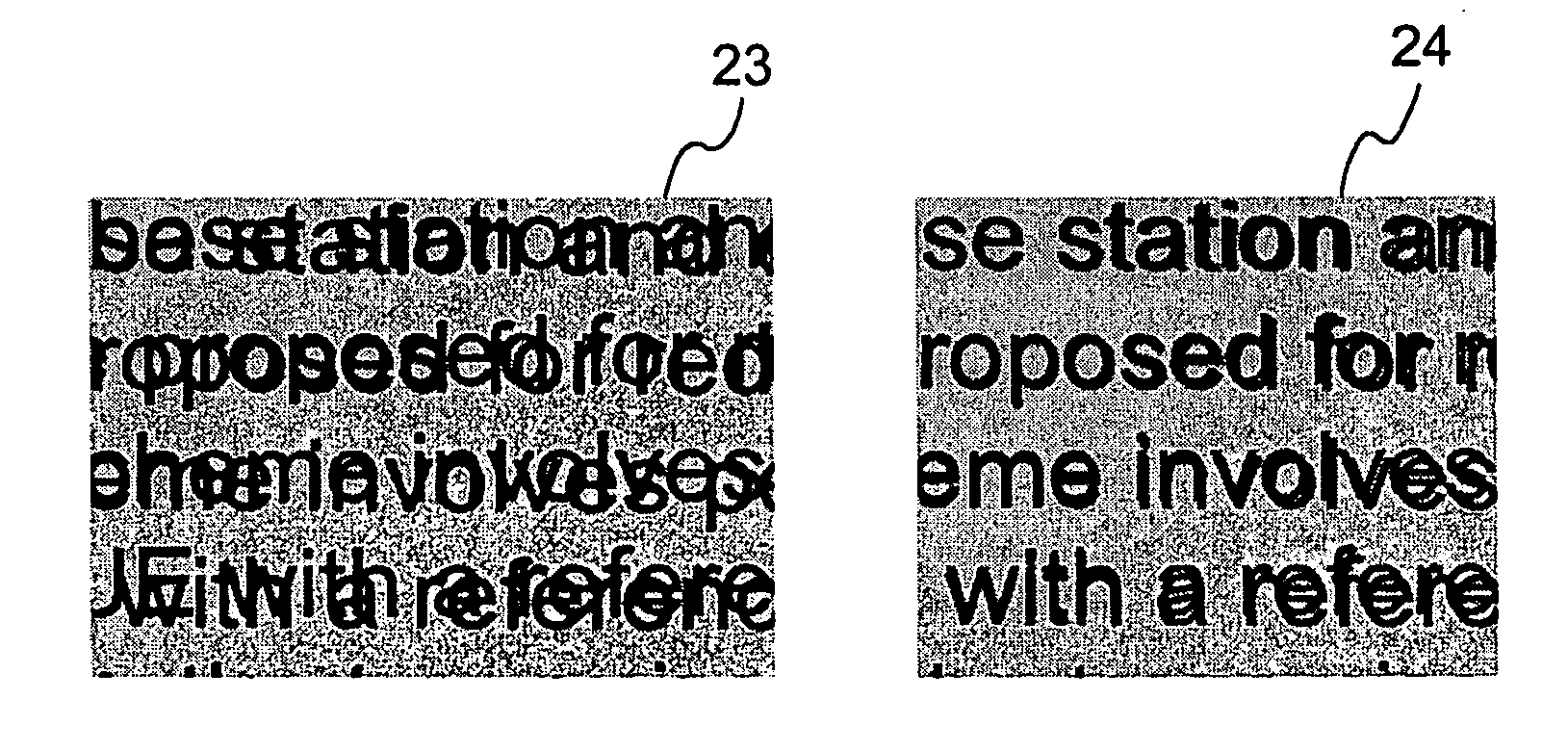Wide-Field Image Input Method And Device
- Summary
- Abstract
- Description
- Claims
- Application Information
AI Technical Summary
Benefits of technology
Problems solved by technology
Method used
Image
Examples
first embodiment
[0032]FIG. 3 shows a wide-field image input device according to the first embodiment of the present invention. The wide-field image input device joins a plurality of partial images obtained by imaging device 1, thereby generating a wide-field image. In the present embodiment, a user uses imaging device 1 to image a scene as an object by manually scanning imaging device 1. Imaging device 1 continuously images the object at a desired angle of field, a desired position, and a desired posture and obtains a partial image series including a series of digitized partial images. Imaging device 1 is embodied by, for example, a camera, in particular, by an imaging unit in the camera.
[0033] The wide-field image input device is provided with camera position / posture estimation unit 2, deformation parameter estimation unit 3, wide-field image storage unit 4, image joining unit 5, and camera scan error detection unit 6. Camera position / posture estimation unit 2 receives the digitized partial image...
second embodiment
[0053]FIG. 4 shows a wide-field image input device according to the second embodiment of the present invention. The wide-field image input device shown in FIG. 4 is configured by adding camera position / posture indication unit 7 to the wide-field image input device according to the first embodiment. Camera position / posture indication unit 7 receives the camera scan error signal from camera scan error detection unit 6 and the camera position / posture information from camera position / posture estimation unit 2. Preferably, the camera scan error signal is camera scan error information including information which scan error occurs.
[0054] Camera position / posture indication unit 7 performs one or more of the following four processes (a) to (d) of:
[0055] (a) visually indicating the change in the relative position between the camera and the imaging object or the change in the camera posture, or the change in the relative position and the change in the camera posture;
[0056] (b) displaying wa...
third embodiment
[0067]FIG. 10 shows a wide-field image input device according to the third embodiment of the present invention. This wide-field image input device is configured by adding absolute distance acquirement unit 8 to the wide-field image input device according to the first or second embodiment. Absolute distance acquirement unit 8 measures the distance between the camera and the object and outputs distance information showing the measured distance to camera scan error detection unit 6. Absolute distance acquirement unit 8 like this is embodied by, for example, a distance sensor which is able to measure the distance between the camera and the object. The configuration shown in FIG. 10 is that absolute distance acquirement unit 8 is added to the wide-field image input device according to the second embodiment, however, absolute distance acquirement unit 8 may be added to the wide-field image input device according to the first embodiment shown in FIG. 3.
[0068] Also, according to the third ...
PUM
 Login to View More
Login to View More Abstract
Description
Claims
Application Information
 Login to View More
Login to View More - R&D
- Intellectual Property
- Life Sciences
- Materials
- Tech Scout
- Unparalleled Data Quality
- Higher Quality Content
- 60% Fewer Hallucinations
Browse by: Latest US Patents, China's latest patents, Technical Efficacy Thesaurus, Application Domain, Technology Topic, Popular Technical Reports.
© 2025 PatSnap. All rights reserved.Legal|Privacy policy|Modern Slavery Act Transparency Statement|Sitemap|About US| Contact US: help@patsnap.com



